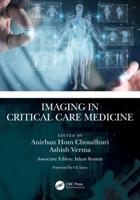Publisher's Synopsis
This book provides evidence-based guidance for pediatric imaging to radiologists, pediatricians, and all subspecialists caring for children, as well as policy advocates. While the majority of pediatric radiology books concentrate on diagnosis, this book highlights how imaging should be used in optimal care, allowing comparisons between different modalities and addressing follow up, complications and the issue of timing of imaging.
The primary objective of this book is to provide a summary of appropriate imaging use in terms of modality and timing based on the best available evidence. The book therefore acts as a resource for optimized clinical care of children and effective decision-making. A secondary objective is to collate the evidence-based practices that constitute quality care for children in the setting of value-based imaging. Radiologists are often in the position of helping clinicians decide when and how to image children with suspected diseases or confirmed diagnoses. However, traditional residency training has done little to fulfill the need for this up-to-date evidence knowledge. Moreover, in spite of furthering subspecialization of the field, the great majority of children's imaging (and care) occur outside of children's hospitals, where clinicians and radiologist might need this type of general guidance for establishing best-practices.
The book is divided in two parts, non-diagnostic considerations such as evidence-based imaging, safety, value, and the practice of radiology in low resource settings and a second larger clinical component divided in prenatal, oncology, neurological, musculoskeletal, cardiothoracic, and abdominal imaging. This new edition incorporates changes in practice and guidelines in the decade since the first edition was written with many new chapters in emerging topics including prenatal, oncology and neurological imaging. This is an ideal guide for radiologists, pediatricians, policy advocates, and all healthcare professionals caring for children.









